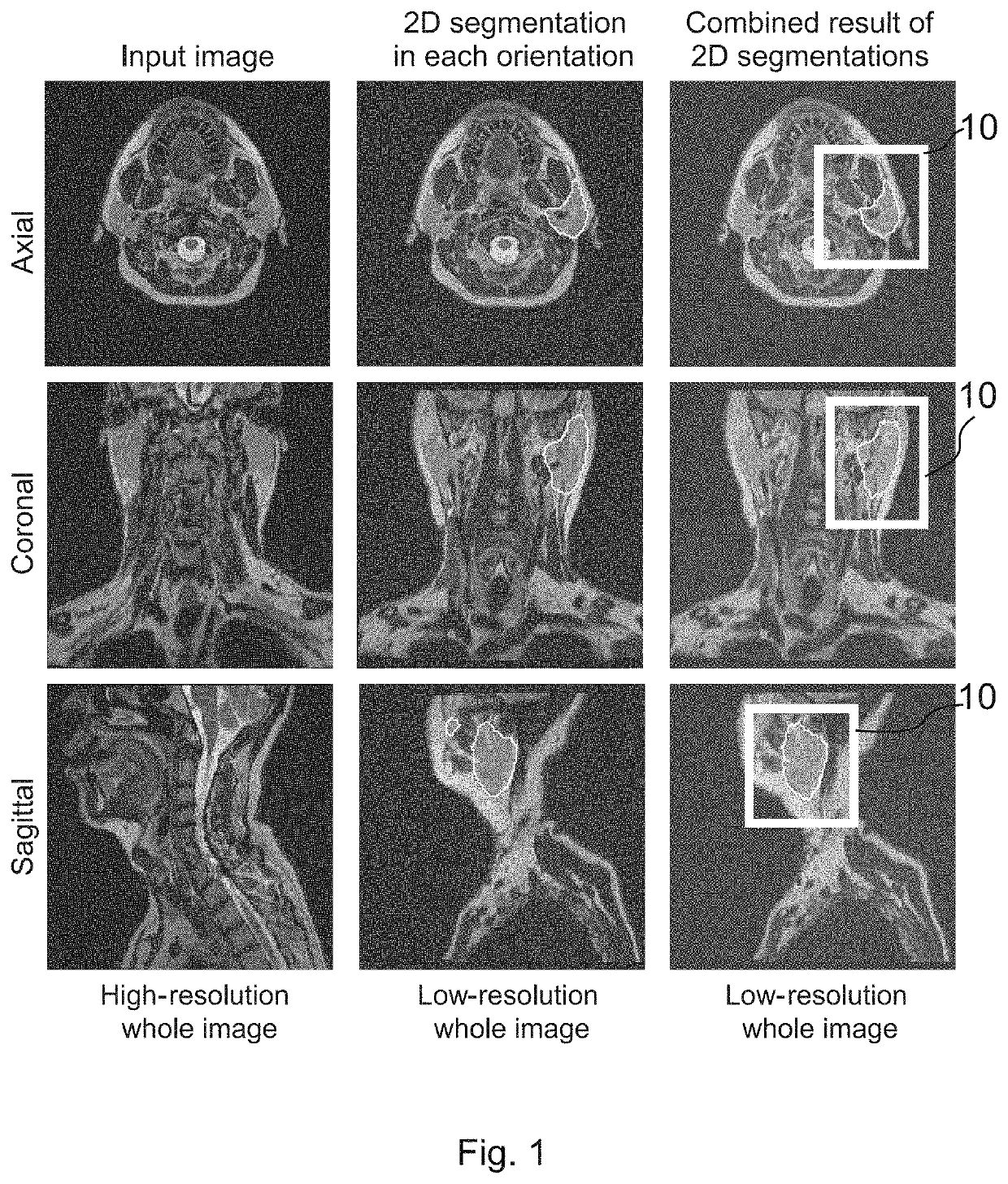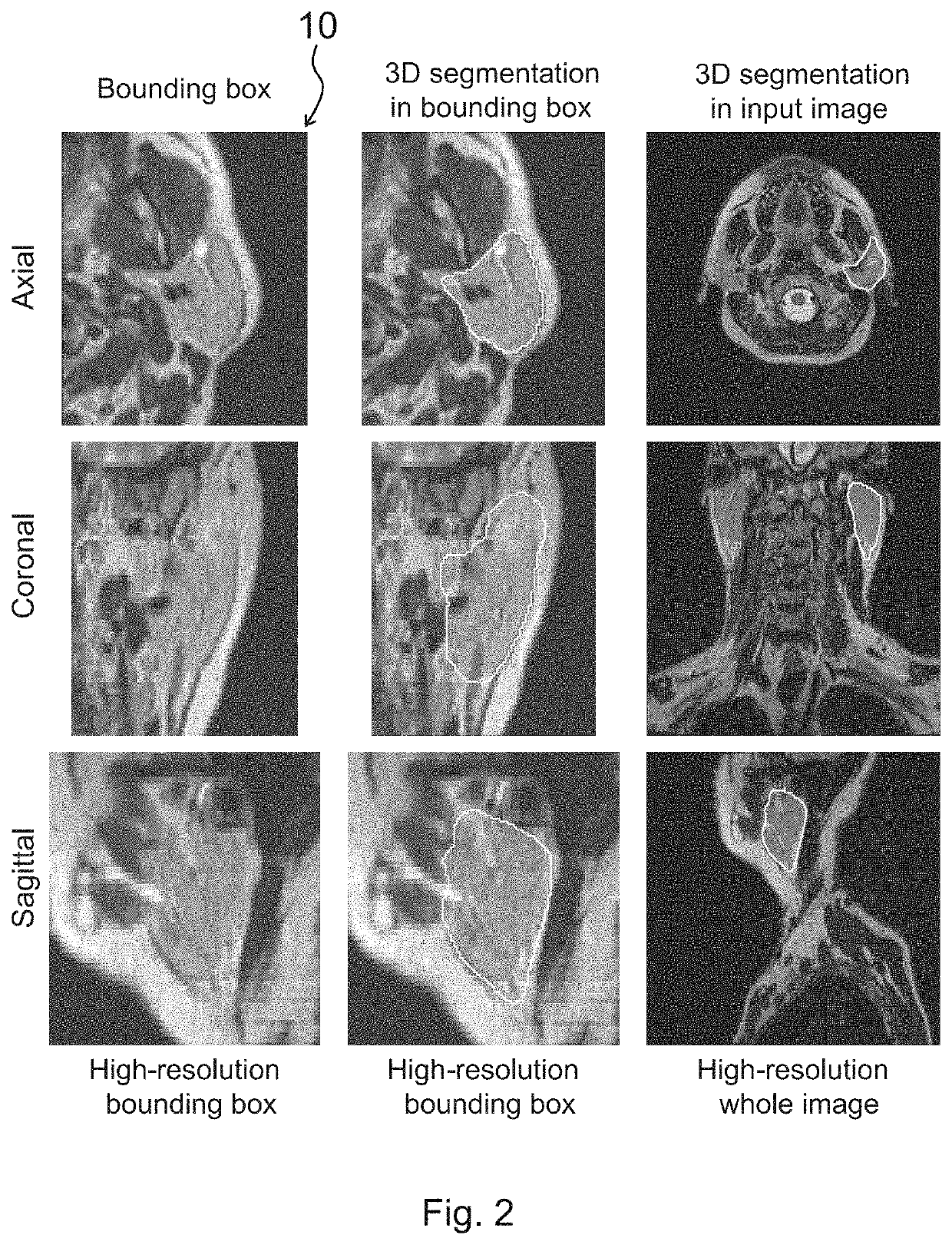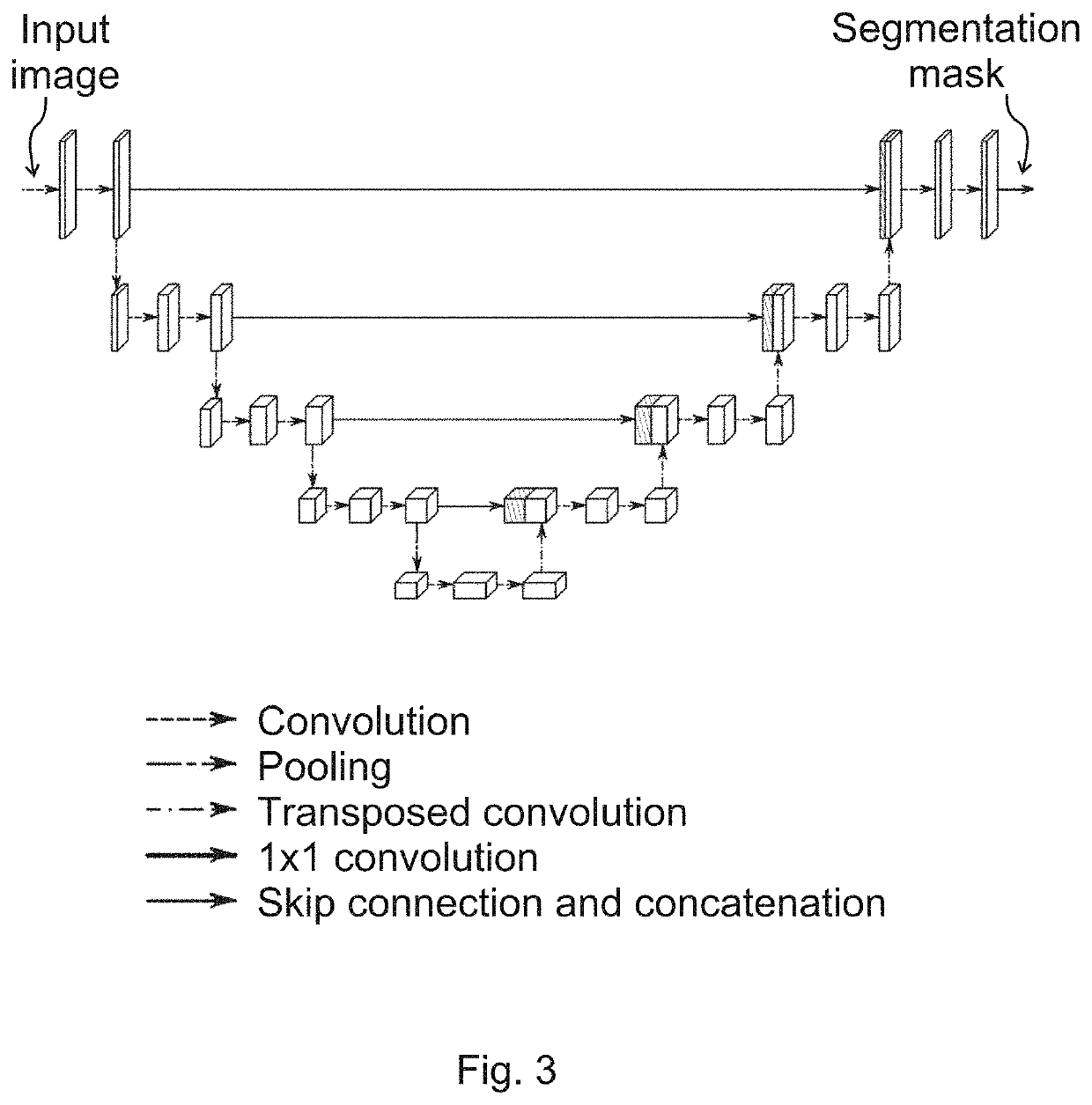Method, system and computer readable medium for automatic segmentation of a 3D medical image
a medical image and automatic segmentation technology, applied in the field of image processing, can solve the problems of insufficient reliability, time-consuming and laborious, and manual segmentation of outlines on a contiguous set of 2d slices, and achieve the effect of reducing processing time and/or resources and efficient localization
- Summary
- Abstract
- Description
- Claims
- Application Information
AI Technical Summary
Benefits of technology
Problems solved by technology
Method used
Image
Examples
Embodiment Construction
[0027]The subject matter disclosed herein is a method based on a machine learning model, e.g. on a deep-learning technique. In the following, an exemplary image dataset is described for use in the method, as well as an exemplary suitable architecture, and exemplary details of the training.
Image Dataset
[0028]The exemplary image dataset was collected for a study on Alzheimer's disease. All images were standard T1 images (T1-weighted scans produced by MRI using short Time to Echo and Repetition Time values) depicting the brain and small part of the neck. All images were preprocessed with an available tool that transforms images into a common geometry (orientation, resolution, uniform voxel size) and applies atlas to segment several structures in the brain. The automatically segmented contours (used for both model training and evaluation) were not verified by medical doctors, so they can be only considered ‘pseudo-gold’ segmentations.
[0029]Additional pre-processing was applied—which is ...
PUM
 Login to View More
Login to View More Abstract
Description
Claims
Application Information
 Login to View More
Login to View More - R&D
- Intellectual Property
- Life Sciences
- Materials
- Tech Scout
- Unparalleled Data Quality
- Higher Quality Content
- 60% Fewer Hallucinations
Browse by: Latest US Patents, China's latest patents, Technical Efficacy Thesaurus, Application Domain, Technology Topic, Popular Technical Reports.
© 2025 PatSnap. All rights reserved.Legal|Privacy policy|Modern Slavery Act Transparency Statement|Sitemap|About US| Contact US: help@patsnap.com



